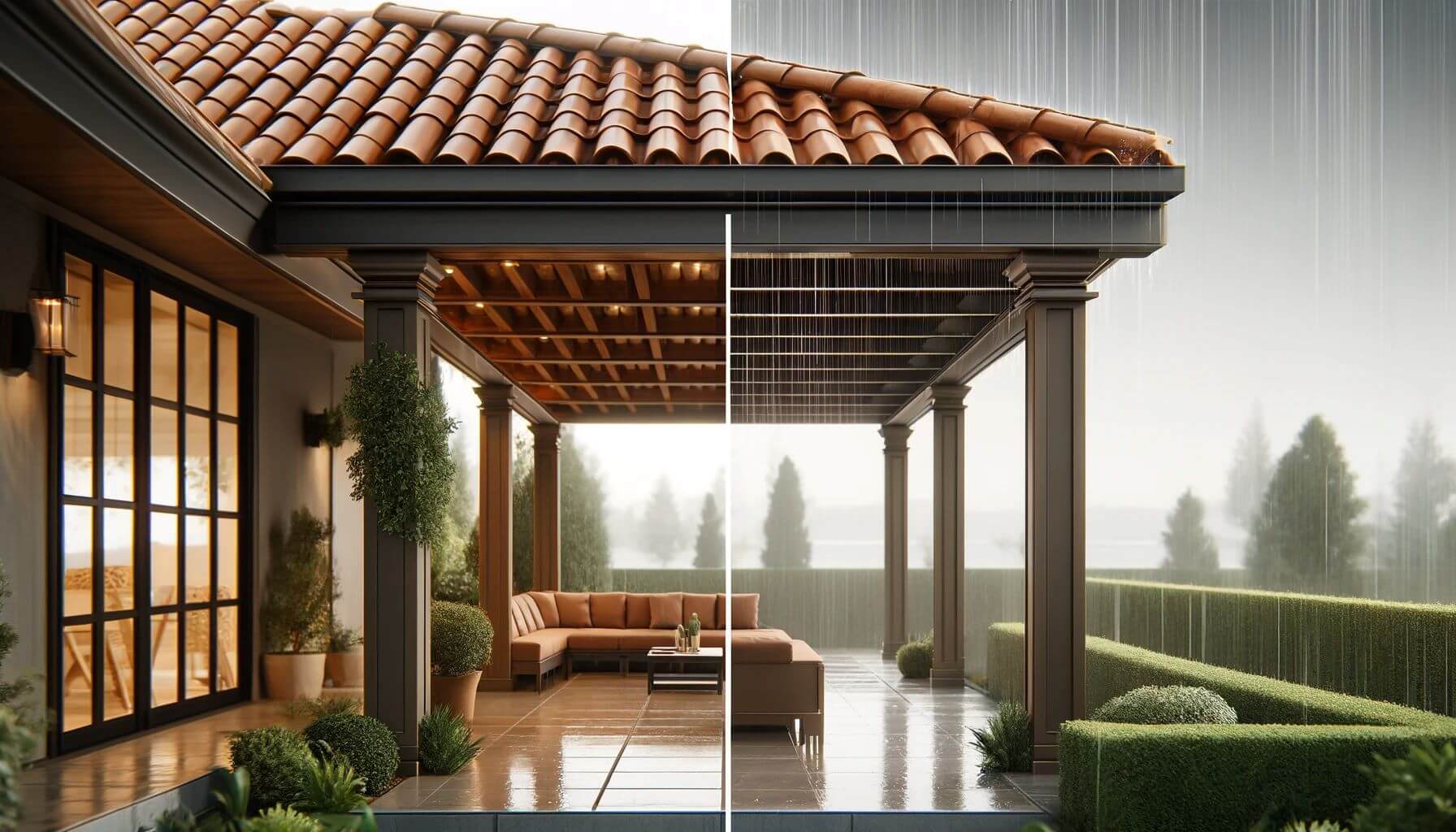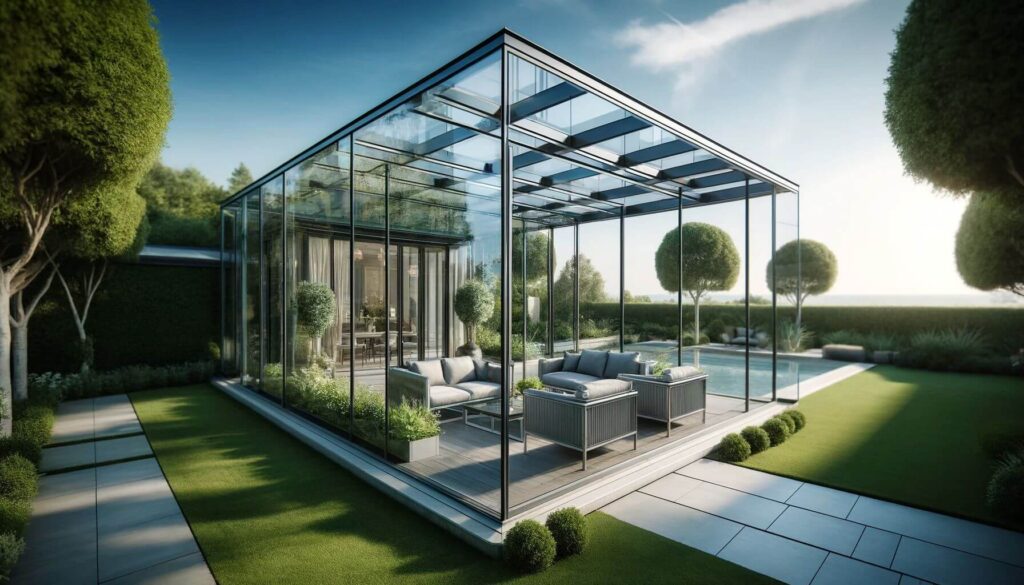
Pergolas are a beautiful addition to any outdoor space, offering shade, style, and a perfect spot for relaxation or entertainment. However, choosing the right size for your pergola can be a challenging task. The perfect pergola should complement your outdoor area without overwhelming it or feeling too small. In this comprehensive guide, we’ll explore the key factors to consider when determining the ideal pergola size for your space.
Understanding the importance of pergola sizing
Before diving into the specifics of pergola sizing, it’s crucial to understand why getting the right dimensions is so important. A well-sized pergola not only enhances the aesthetic appeal of your outdoor area but also ensures functionality and comfort. Too small, and your pergola might feel cramped and unusable. Too large, and it could overpower your yard or patio, potentially reducing other usable outdoor space.
The right pergola size can transform your outdoor living area into a versatile and inviting extension of your home. It can create a focal point in your garden, define specific areas for dining or lounging, and even increase your property’s value. With careful planning and consideration, you can choose a pergola size that perfectly balances form and function in your outdoor space.
Assessing your available space

The first step in choosing the perfect pergola size is to carefully assess your available space. Start by measuring the area where you plan to install the pergola. Consider not just the open space, but also any existing features like trees, garden beds, or other structures that might impact the pergola’s placement or size.
For those with smaller yards or patios, don’t be discouraged. There are many creative ways to maximize small outdoor spaces, and a well-designed pergola can actually make your area feel larger and more defined. In contrast, if you have a large backyard, you’ll need to consider how the pergola will fit into the overall landscape design and whether you want it to be a dominant feature or a more subtle addition.
Remember to factor in any local building codes or homeowner association rules that might restrict the size or placement of outdoor structures. It’s always better to check these regulations before finalizing your pergola plans.
Determining the purpose of your pergola
The intended use of your pergola plays a significant role in determining its ideal size. Are you looking to create a cozy reading nook, an outdoor dining area, or a spacious entertainment space? Each purpose may require a different size and configuration.
For instance, if you’re planning to use your pergola as an outdoor dining area, you’ll need to ensure there’s enough space for a table and chairs, plus room for people to move around comfortably. A good rule of thumb is to add about 3 feet of clearance around the table for chairs and circulation.
If you’re envisioning a luxurious open-air bedroom, you’ll need to consider the size of the bed, any additional furniture, and circulation space. For a lounging area, think about the size and arrangement of outdoor sofas, chairs, and perhaps a coffee table.
Considering the proportions of your home
Your pergola should complement your home’s architecture and scale, not compete with it. A pergola that’s too large can overshadow your house, while one that’s too small might look out of place or insignificant.
As a general guideline, consider the height of your home’s first story as a reference point. Your pergola’s height should typically not exceed this. For width, a pergola attached to your home should not extend beyond the width of your house. For freestanding pergolas, ensure they don’t dwarf nearby structures.
If you’re looking to enhance your home’s curb appeal with a front yard pergola, check out these modern pergola design ideas for your home’s front. These can provide inspiration for pergolas that beautifully complement your home’s facade.
Factoring in furniture and amenities
The furniture and amenities you plan to place under or around your pergola will significantly impact its required size. Make a list of all the items you want to include, such as seating, tables, grills, or even a hot tub.
Measure these items and create a rough layout to determine the minimum size your pergola needs to be to accommodate everything comfortably. Don’t forget to include space for people to move around easily. A cramped pergola can be uncomfortable and defeat the purpose of creating an inviting outdoor space.
For those considering an outdoor kitchen under their pergola, explore these backyard covered outdoor kitchen ideas for inspiration on how to size and layout your pergola to accommodate cooking and dining areas.
Height considerations for your pergola size
The height of your pergola is just as important as its width and length. A pergola that’s too low can feel claustrophobic, while one that’s too tall might not provide adequate shade or the cozy feeling you’re after.
Generally, pergolas should be at least 8 feet tall to allow for comfortable headroom. If you’re planning to install fans, lights, or heaters, you might want to go a bit higher. For a more dramatic effect or to accommodate taller guests, consider heights up to 12 feet.
Remember that the height of your pergola will affect the amount of shade it provides. A taller pergola will cast a larger shadow but might allow more light to filter through the sides. Experiment with different heights to find the perfect balance of shade and openness for your space.
Considering retractable options
If you’re struggling to decide on a fixed size, consider a retractable pergola roof. These versatile structures offer the best of both worlds, allowing you to adjust the coverage based on your needs and the weather.
Retractable pergolas can be especially beneficial in areas with variable climate conditions. They provide shelter from rain or intense sun when needed, and can be opened up to enjoy clear skies on pleasant days. This flexibility can make your outdoor space usable in a wider range of conditions, potentially influencing the size you choose for your pergola.
Planning for future growth
When sizing your pergola, it’s wise to think about future needs and potential changes to your outdoor space. If you’re planning to expand your patio or add more outdoor features in the coming years, you might want to size your pergola to accommodate these future plans.
Consider also the growth of any plants you intend to incorporate into your pergola design. Climbing plants can add beauty and additional shade to your pergola, but they need room to grow. If you’re interested in creating a lush, plant-filled space, check out these ideas for plant-filled tropical patios for inspiration on how to size and design your pergola to accommodate flourishing greenery.
Balancing aesthetics and functionality
While functionality is crucial, the aesthetic appeal of your pergola shouldn’t be overlooked. The size and proportions of your pergola contribute significantly to its overall look and how well it integrates with your outdoor design.
For a harmonious look, consider the golden ratio (approximately 1:1.61) when deciding on the proportions of your pergola. This ratio, found in nature and used in classical architecture, is often pleasing to the eye. For example, if your pergola is 10 feet wide, a length of about 16 feet would follow this ratio.
If you’re aiming for a specific style, such as modern farmhouse pergolas, the size and proportions might be influenced by the characteristics of that particular design aesthetic. Research different styles to find one that resonates with your taste and complements your home’s architecture.
Considering multi-level designs
For sloped yards or to add visual interest, consider a multi-level pergola design. This approach can help you make the most of challenging terrain while creating distinct areas within your outdoor space.
Multi-level pergolas can be particularly effective in creating a resort-inspired patio oasis. By varying the heights and sizes of different sections, you can define separate areas for dining, lounging, and perhaps even an outdoor bar or kitchen.
When planning a multi-level pergola, pay extra attention to the transitions between levels. Ensure that each section is appropriately sized for its intended use and that the overall structure maintains a cohesive look.
Material considerations in pergola sizing
The materials you choose for your pergola can influence its ideal size. Different materials have varying strengths and weight-bearing capacities, which can affect how large you can build your pergola without compromising structural integrity.
For example, aluminum pergolas are lightweight and can often span larger areas without additional support. On the other hand, wooden pergolas might require more frequent support posts for larger sizes. Modern concrete pergola designs can offer unique possibilities for size and shape but may have specific structural requirements.
Consider also how the material choice affects the visual weight of your pergola. A heavy-looking pergola might need to be sized more conservatively to avoid overwhelming your space, while a lighter, more airy design could potentially be larger without feeling imposing.
Incorporating lighting and electrical needs

Don’t forget to factor in lighting and any electrical features you want to include when sizing your pergola. Proper pergola lighting can extend the usability of your outdoor space into the evening hours and create a magical ambiance.
Consider the placement of light fixtures, fans, or heaters when determining the size and layout of your pergola. You’ll need to ensure there’s enough headroom for these fixtures and that they’re positioned for optimal effect. If you’re planning to install a sound system or outdoor television, factor in space for these components as well.
Finding your perfect pergola size
Choosing the perfect pergola size for your space involves balancing numerous factors, from the available area and intended use to aesthetic considerations and future plans. By carefully considering each aspect discussed in this guide, you can arrive at a pergola size that not only fits your space beautifully but also enhances your outdoor living experience.
Remember, the goal is to create an outdoor oasis that feels harmonious with your home and landscape while meeting your functional needs. Whether you opt for a cozy intimate pergola or a grand entertainment space, the right size will transform your outdoor area into a cherished extension of your home.
Take your time with the planning process, and don’t hesitate to seek professional advice if you’re unsure. With careful consideration and thoughtful design, your perfectly sized pergola will provide years of enjoyment and add significant value to your home. For more inspiration and ideas on pergola designs and outdoor living spaces, explore our other articles on pergola maintenance and modern pergola styles.



